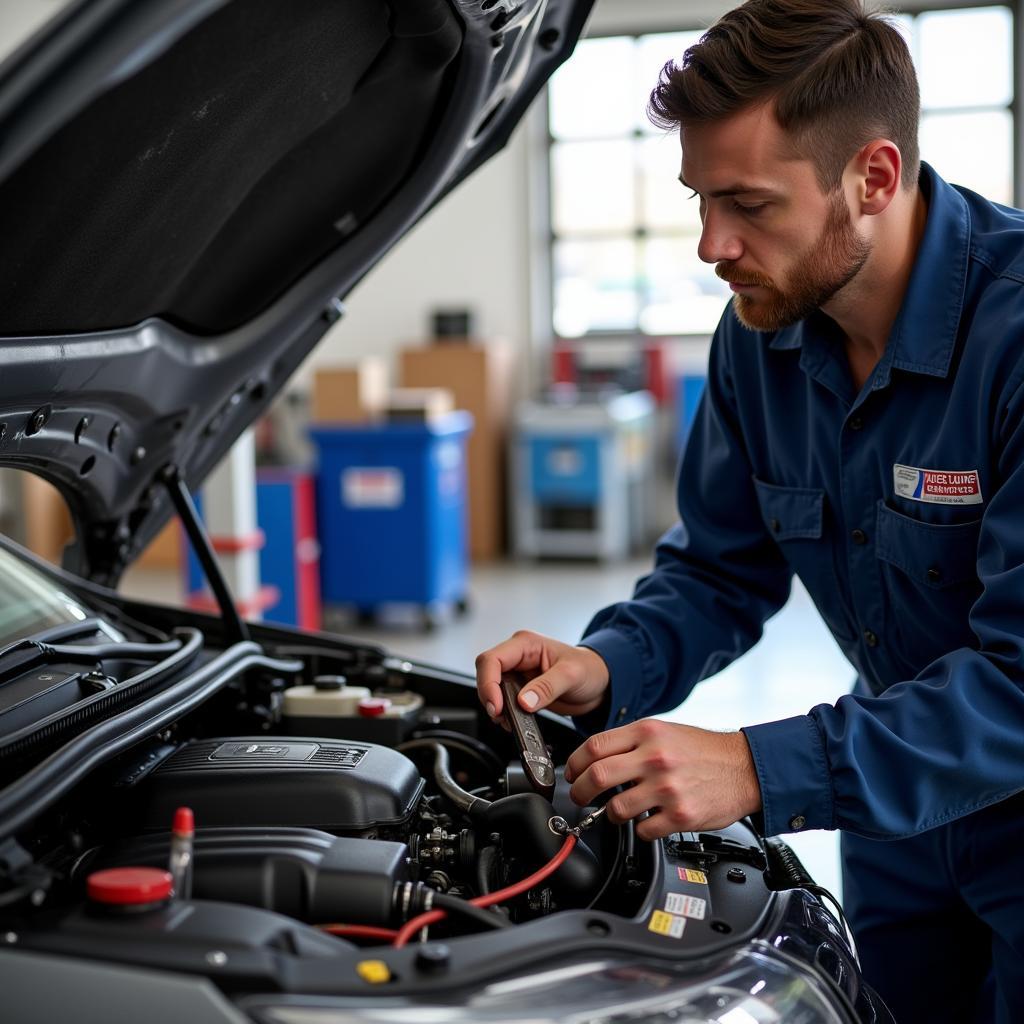Fixing a ding in your car door can be a frustrating experience, but it doesn’t have to be a costly trip to the body shop. With a little patience and the right techniques, you can often fix minor dents and dings yourself, saving time and money. This guide will walk you through the process of how to Fix A Ding In Car Door, from simple DIY methods to more advanced techniques for deeper damage.
Understanding the Ding: Assessing the Damage
Before you begin, it’s important to assess the extent of the damage. A small ding, often caused by a shopping cart or a minor bump, might be easily fixed with paintless dent repair (PDR) methods. However, deeper dents that involve creased metal or paint damage might require more involved techniques like body filler and repainting. Knowing the difference will help you choose the right approach and achieve the best results.
Simple DIY Fixes for Minor Dings
For shallow dings without paint damage, you can often use readily available tools to fix a ding in car door. One popular method is using a plunger. A cup plunger can create suction, pulling the dent outwards. Apply the plunger to the dent, push and pull firmly a few times, and check the progress. Another method uses hot glue and dowel rods. Glue the dowels to the dent, let it dry, and then gently pull them outwards to pop the dent back into place.
Fixing a Ding in Car Door with Paintless Dent Repair (PDR)
Paintless dent repair (PDR) is a more advanced technique that professionals often use, but it’s also accessible to DIYers with the right tools. PDR involves using specialized tools like metal rods and knockdowns to massage the dent out from behind the panel. This requires access to the back of the car door panel, often involving removing the interior door panel. While more complex than the plunger method, PDR can achieve impressive results for dings and minor dents without damaging the paint.
Dealing with Deeper Dents: Body Filler and Repainting
When the dent is deeper and involves creased metal or paint damage, body filler and repainting are often necessary. This is a more involved process that requires sanding down the damaged area, applying body filler to even out the surface, sanding again to smooth the filler, priming, and finally repainting the area to match the car’s original color. This method requires more skill and specialized tools, and while achievable by DIYers, it’s often best left to professionals for optimal results.
 Applying Body Filler to Repair a Deeper Dent in a Car Door
Applying Body Filler to Repair a Deeper Dent in a Car Door
Preventing Future Dings: Protecting Your Car Door
Preventing dings in the first place is always the best approach. Park in less congested areas, use door edge guards, and be mindful of your surroundings when opening your car door. These simple steps can significantly reduce the risk of encountering those annoying door dings.
“Preventing dings is much easier than fixing them. A little caution goes a long way,” says renowned automotive expert, Robert Johnson, from the Auto Repair Institute of America.
How to Fix a Ding in Car Door: Choosing the Right Method
Choosing the right method depends on the severity of the ding and your comfort level with DIY repairs. For very minor dings, a plunger or hot glue might be enough. For more significant dents, PDR might be the solution. And for deep dents with paint damage, body filler and repainting are usually required.
“Remember, assessing the damage accurately is the key to successful ding repair,” adds automotive engineer, Susan Miller, from the Automotive Engineering Society. “Don’t be afraid to seek professional advice if you’re unsure about the best course of action.”
Conclusion: Getting Your Car Door Back in Shape
Fixing a ding in your car door can range from a simple DIY fix to a more involved repair process. By understanding the different methods available, you can choose the right approach for your specific situation. From using a plunger for minor imperfections to employing PDR techniques for larger dents, or even resorting to body filler and repainting for more severe damage, you can restore your car door to its former glory. If you’re ever unsure about the best course of action, don’t hesitate to reach out to the experts at AutoTipPro for assistance. Contact us at +1 (641) 206-8880 or visit our office at 500 N St Mary’s St, San Antonio, TX 78205, United States.






Leave a Reply